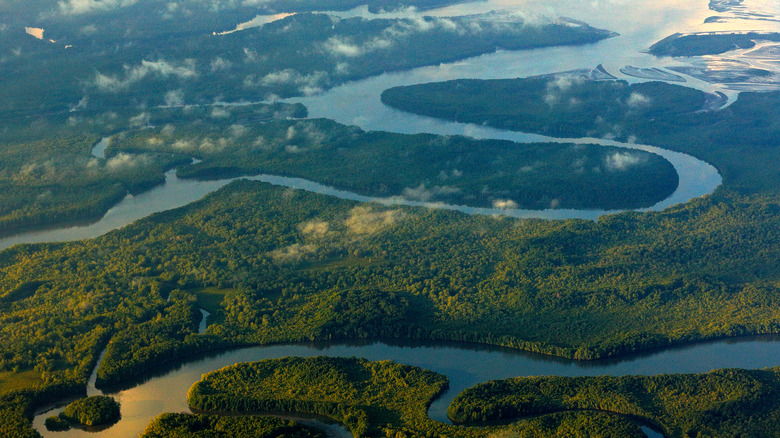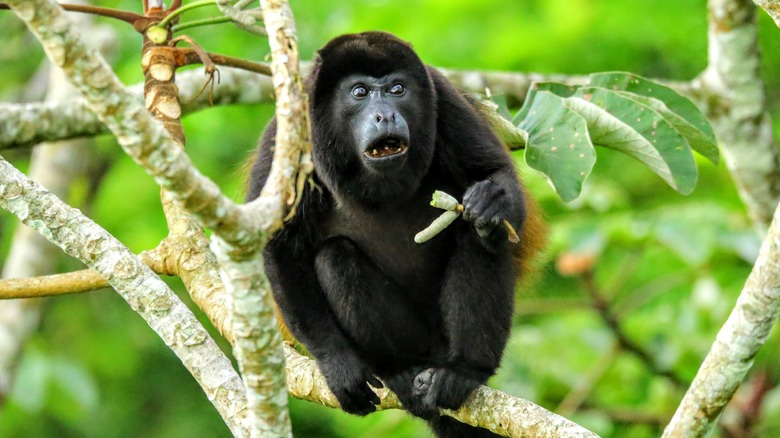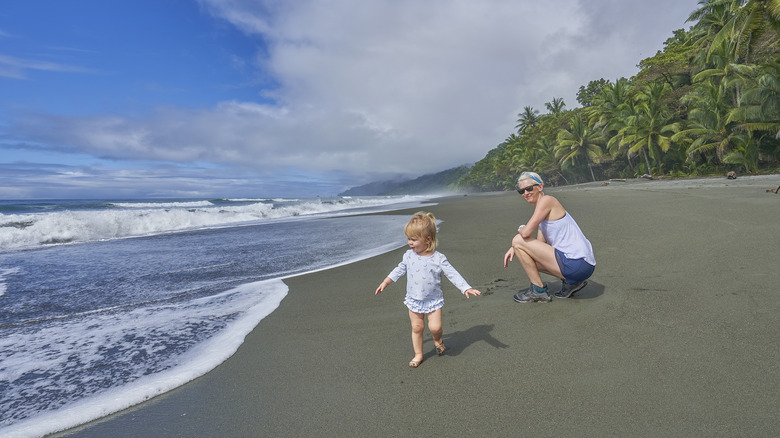Visit This Central American National Park For Breathtaking Wildlife And Outdoor Adventures
Located on the Osa Peninsula in southwest Costa Rica, Corcovado National Park is a nature lover's dream come true. The largest national park in Costa Rica, it contains half of all the species in the country and a whopping 2.5% of the planet's biodiversity, making it one of the most biodiverse tracts of land on the planet. In addition to housing the last tropical rainforest on the Pacific coast of Central America, it boasts hundreds of endemic plant and animal species from unique plant life to a dizzying array of birds, mammals, reptiles, fish, and insects.
The catch is that there are no roads into the park, so the only way to access the interior is by plane, boat, horseback, or by hiking one of the many trails with a guide, which can take 1 to 15 hours. You're also not allowed to tour on your own — an accredited local guide must accompany you. This is for your own protection. With jaguars in the forest, sharks in the waterways, and four kinds of highly venomous snakes slithering around, this place is not exactly a petting zoo. This is 164 square miles of Earth unplugged — about as far from hazelnut lattes as you could possibly imagine. But don't let Corcovado's wildness and remoteness deter you from visiting — incredible adventures await you in this one-of-a-kind park.
Hiking and horseback riding tours
The best way to experience Corcovado National Park is on foot — slowly — drinking in the views, sounds, and sensations. Tours depart from the neighboring towns of Drake Bay and Puerto Jimenez and vary in length. Multi-day trips include stays at La Sirena, the park's main ranger station, the only place inside the park offering overnight accommodation.
Animals commonly seen on walking tours are scarlet macaws, harpy eagles, coatis (similar to raccoons), anteaters, sloths, and spider monkeys, famous for their playful tree antics and acrobatics. Another exotic creature you might meet is the endangered Baird's tapir, which looks a bit like a cross between a hippo and an anteater with its round body and long, fleshy nose. Tapirs are Central America's largest indigenous mammals. Jaguars, pumas, and several other kinds of cats are also found throughout the park. As they're extremely elusive, they're difficult to spot. But they're probably closer than you think, watching you from the treetops.
Coastal and marine areas
There's a lot more to Corcovado National Park than the jungle. The park also encompasses an intricate network of waterways. American crocodiles and bull sharks are common in lagoons and rivers, though, so they're not ideal for swimming. For that, head to the park's 23 miles of beaches. On these long, wide strips of golden sand, you can walk for miles without encountering another human. Instead, you'll encounter sea birds and a host of marine animals, including sea turtles if you're lucky. Four different kinds of sea turtles nest on the Osa peninsula: olive ridleys, leatherbacks, hawksbills, and green turtles.
However you choose to experience this magical place, do it with all your senses. Tune in to the cheerful cacophony of birds. Listen for the distinct, menacing roar of the male howler monkey, which can be heard from up to three miles away. Breathe in the rich smell of the forest and the salty tang of the sea. If you pick up a musky scent, it probably means a tapir is nearby. Don't snuggle up to any snakes, though. In particular, steer clear of the fer-de-lance, considered the deadliest snake in the Americas because of its potent toxin and aggressive, unpredictable nature.


